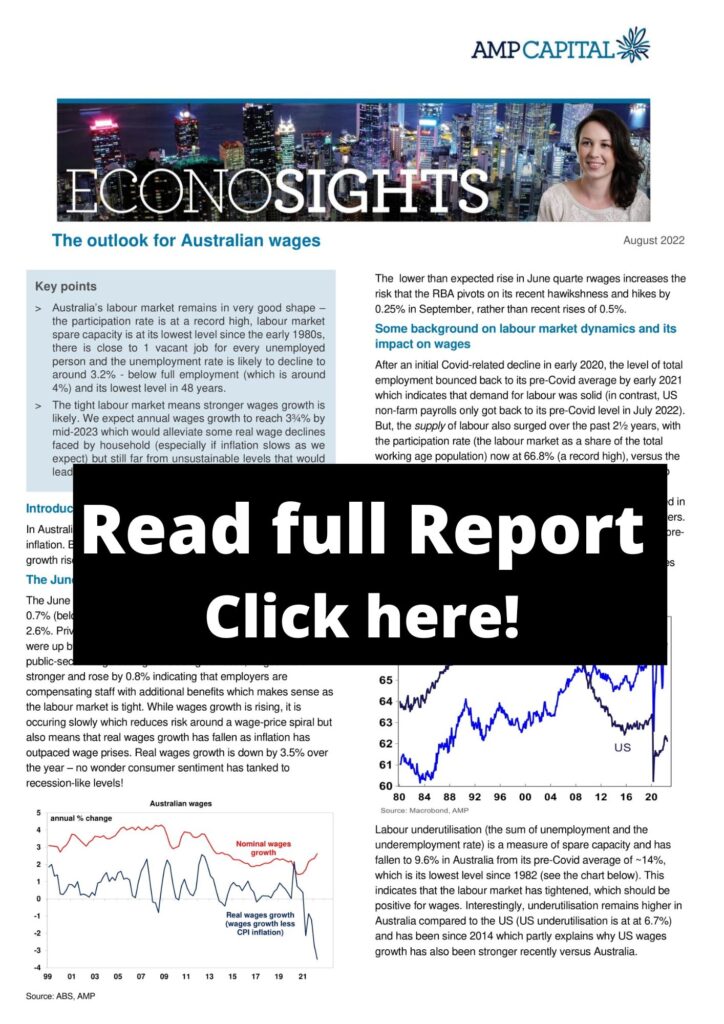Can You Expect A Wage Increase This Year. If So, How Much?
The Outlook For Australian Wages
Can you expect a wage increase this year, and if so how much?
Earlier on this year inflation stuck, and boy did it strike hard. The cost of living increased substantially and the RBA has combated this inflation by increasing interest rates. What this means is the for the average Australian there is less money to go around. One way to combat this is to get a pay rise. In this report by AMP senior economist, Diane Mousina, she explores the possibility of wage rises in Australia.
Key Points
Australia’s labour market remains in very good shape – the participation rate is at a record high, labour market spare capacity is at its lowest level since the early 1980s, there is close to 1 vacant job for every unemployed person and the unemployment rate is likely to decline to around 3.2% – below full employment (which is around 4%) and its lowest level in 48 years.
The tight labour market means stronger wages growth is likely. We expect annual wages growth to reach 3¾% by mid-2023 which would alleviate some real wage declines faced by household (especially if inflation slows as we expect) but still far from unsustainable levels that would lead to concerns about a wage-price spiral.
June quarter wages
The June quarter wage price index showed a rise of 0.7% with a lift in annual growth to 2.6%. Including bonuses, wages were stronger and rose by 0.8% indicating that employers are compensating staff with additional benefits which makes sense as the labour market is tight. While wages growth is rising, it is occurring slowly which reduces risk around a wage-price spiral but also means that real wages growth has fallen as inflation has outpaced wage rises. Real wages growth is down by 3.5% over the year – no wonder consumer sentiment has tanked to recession-like levels!
The lower than expected rise in June quarter wages increases the risk that the RBA pivots on its recent hawkishness and hikes by 0.25% in September, rather than recent rises of 0.5%.
The outlook for Australian wages growth
Job vacancies are at record highs (there is close to 1 vacant job for every unemployed person) which means that employment is still likely to be solid from here. Our Jobs Leading Indicator is pointing to decent employment growth ahead.
Solid employment growth should see the unemployment rate decline to 3.2% by the end of the year which is well below full employment (around 4%) before a pick up in the unemployment rate later in 2023 as the economy slows. This fall in near-term spare capacity or underutilisation should be positive for wages growth and we expect annual wages growth to reach 3¾% in 2023.
Conclusion
The Australian labour market remains in very good shape with the unemployment rate below full employment which is reducing spare capacity. The tight labour market is expected to lead to a lift in
wages growth and we expect 3¾% annual wages growth by mid-2023.

Leave a Reply